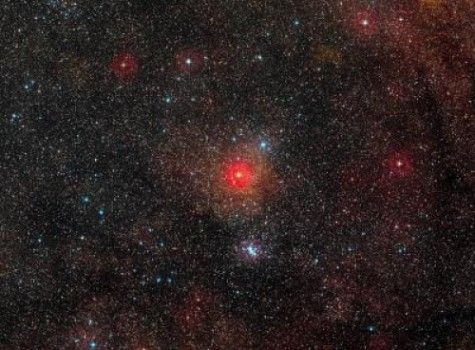
The Man in the Moon appeared when meteoroids struck Earth-facing side of the moon creating large flat seas of basalt that we see as dark areas called maria. But no “face” exists on farside of the moon and now, Penn State astrophysicists think they know why.
“I remember the first time I saw a globe of the moon as a boy, being struck by how different the farside looks,” said Jason Wright, assistant professor of astrophysics. “It was all mountains and craters. Where were the maria? It turns out it’s been a mystery since the fifties.”
This mystery is called the Lunar Farside Highlands Problem and dates back to 1959, when the Soviet spacecraft Luna 3 transmitted the first images of the “dark” side of the moon back to Earth. It was called the dark side because it was unknown, not because sunlight does not reach it. Researchers immediately noticed that fewer “seas” or maria existed on this portion of the moon that always faces away from Earth.
Wright, Steinn Sigurdsson, professor of astrophysics and Arpita Roy, graduate student in astronomy and astrophysics, and lead author of the study, realized that the absence of maria, which is due to a difference in crustal thickness between the side of the moon we see and the hidden side, is a consequence of how the moon originally formed. The researchers report their results in today’s (June 9) Astrophysical Journal Letters.
The general consensus on the moon’s origin is that it probably formed shortly after Earth and was the result of a Mars-sized object hitting Earth with a glancing, but devastating impact. This Giant Impact Hypothesis suggests that the outer layers of Earth and the object were flung into space and eventually formed the moon.
“Shortly after the giant impact, Earth and the moon were very hot,” said Sigurdsson.
Earth and the impact object did not just melt; parts of them vaporized, creating a disk of rock, magma and vapor around Earth.
“The moon and Earth loomed large in each others skies when they formed, ” said Roy.
The geometry was similar to the rocky exoplanets recently discovered very close to their stars, said Wright. The moon was 10 to 20 times closer to Earth than it is now, and the researchers found that it quickly assumed a tidally locked position with the rotation time of the moon equal to the orbital period of the moon around Earth. The same real estate on the moon has probably always faced Earth ever since. Tidal locking is a product of the gravity of both objects.
The moon, being much smaller than Earth cooled more quickly. Because Earth and the moon were tidally locked from the beginning, the still hot Earth — more than 2500 degrees Celsius — radiated towards the near side of the moon. The far side, away from the boiling Earth, slowly cooled, while Earth-facing side was kept molten creating a temperature gradient between the two halves.
This gradient was important for crustal formation on the moon. The moon’s crust has high concentrations of aluminum and calcium, elements that are very hard to vaporize.
“When rock vapor starts to cool, the very first elements that snow out are aluminum and calcium,” said Sigurdsson.
Aluminum and calcium would have preferentially condensed in the atmosphere of the cold side of the moon because the nearside was still too hot. Thousands to millions of years later, these elements combined with silicates in the moon’s mantle to form plagioclase feldspars, which eventually moved to the surface and formed the moon’s crust, said Roy. The farside crust had more of these minerals and is thicker.
The moon has now completely cooled and is not molten below the surface. Earlier in its history, large meteoroids struck the nearside of the moon and punched through the crust, releasing the vast lakes of basaltic lava that formed the nearside maria that make up the man in the moon. When meteoroids struck the farside of the moon, in most cases the crust was too thick and no magmatic basalt welled up, creating the dark side of the moon with valleys, craters and highlands, but almost no maria.
Story Source:
The above story is based on materials provided by Penn State. The original article was written by A’ndrea Elyse Messer. Note: Materials may be edited for content and length.
Journal Reference:
- Arpita Roy et al. Earthshine on a Young Moon: Explaining the Lunar Farside Highlands. Astrophysical Journal Letters., June 2014 DOI: 10.1088/2041-8205/788/2/L42





